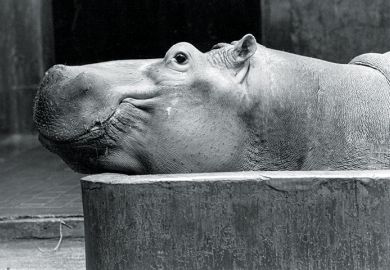Michael Billig’s Learn to Write Badly: How to Succeed in the Social Sciences (2013) was a book many scholars were probably too embarrassed or too much in denial to read. There is now a sequel, More Examples, Less Theory, a response to critics and their objection to his earlier book: “Moan! Moan! Don’t you like anything?”
The idea was to produce a book about good academic writing, illuminating current practices as a way of trying to influence tomorrow. More Examples should, in theory, be a safe, comforting read.
Yet what authors commit to paper can be deceptive. For as Billig notes, in a warning about one of his intellectual heroes, Sigmund Freud: “as he reveals, so he conceals”. This is also true of More Examples. While the book offers a constructive agenda, the critical urge remains and surfaces throughout.
Initially, Billig wanted to explore how there are more ways of writing academically than leading journals currently recognise – one standard style may be the norm, but it is not inevitable or natural. So he looked to unearth praiseworthy examples of writing from the past. As a psychologist, he turned to the disciplinary forefathers (William James, Freud) and some unsung greats (the Earl of Shaftesbury, Abraham Tucker and Marie Jahoda). He focused on specific examples of their writings across a variety of forms: a case study, a journal article, a preface, a seminar transcript, a book and so on.
As the work progressed, it became less about good writing and more about how these historical figures employed examples in their writing. What is meant by “examples” is deliberately left open and not given a theoretical definition – and for good reason.
Billig insists that examples are in rhetorical tension to theory. Here there is something gently subversive about More Examples. For the book is not just about writing or the use of examples. It is also a scornful critique of that most sacred of modern academic shibboleths: doing theory and being theoretical.
The author is damning about the uses (read abuses) of theory, showing just as much contempt for academic theorising as for bad academic writing. This is a position shared by some of Billig’s historical figures such as James (theory mutilates reality). In a powerful and compelling discussion of Henri Tajfel and Peretz Bernstein’s writings about the Holocaust, and how theory could never explain an event of such unprecedented ferocity, Billig concludes that “[theory] in its oversimplified triviality…constitutes an untruth”.
This doesn’t mean there is no room for theory, it just needs to be less prominent and treated as mere theory. The main purpose of More Examples is to upgrade the status of examples and descriptions in psychology, and the social sciences more generally. The value of examples is not to just illustrate an abstraction or theory. For Billig, the brilliant and underrated Austrian psychologist Jahoda used examples, through descriptions and case studies, to discover, illuminate and interpret. Examples, in other words, can theorise without doing theory. In the words of the German philosopher Ernst Cassirer, quoting Goethe: “all that is factual is already theory”.
Among this gallery of good examples, there is room for one bad example. This is someone who became one of the most influential and cited figures in the human and social sciences. His weekly Parisian seminars became the basis of a groundbreaking theory that reimagined psychoanalysis for the media age. He was also responsible for creating hundreds of neologisms.
The example of Jacques Lacan offers a sobering lesson in what can happen when a notable writer of the mind acts as if his theories require neither examples nor evidence. And so I am left to conclude: less Lacan, more Billig, please.
Michael Marinetto is senior lecturer in management at Cardiff Business School.
More Examples, Less Theory: Historical Studies of Writing Psychology
By Michael Billig
Cambridge University Press
296pp, £85.00 and £22.99
ISBN 9781108498418 and 9781108736022
Published 30 September 2019
Register to continue
Why register?
- Registration is free and only takes a moment
- Once registered, you can read 3 articles a month
- Sign up for our newsletter
Subscribe
Or subscribe for unlimited access to:
- Unlimited access to news, views, insights & reviews
- Digital editions
- Digital access to THE’s university and college rankings analysis
Already registered or a current subscriber?






